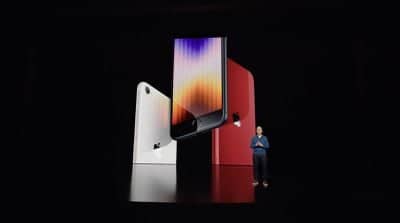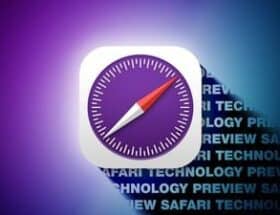Hartley Charlton
Apple's third-generation iPhone SE, unveiled on March 8, 2022, has reached the 1,000-day milestone.

The iPhone SE debuted in 2016 as Apple's answer to customers who wanted a more affordable iPhone without sacrificing key features. The first SE model was based on the iPhone 5s design, but featured the then-flagship A9 chip and the latest camera technology. Subsequent iterations followed a similar formula, with the second-generation iPhone SE in 2020, adopted the iPhone 8's design and added the A13 Bionic chip, while the third generation launched in 2022 with another leap in processing power thanks to the A15 Bionic chip. Over the years, the SE line has become synonymous with classic design paired with modern internals.
When the third-generation iPhone SE was introduced, it brought significant improvements over its predecessor, including the A15 Bionic chip — the same processor used in the iPhone 13 line — longer battery life, and 5G connectivity that expanded high-speed wireless access for Apple’s budget-conscious customers. However, the external design was starting to show its age even after the device was unveiled in 2022. The third-generation SE retained the 4.7-inch Retina HD display and thick bezels of the iPhone 8, a design that actually first debuted in 2014 on the iPhone 6. Likewise, its LCD screen seemed out of step with Apple’s more modern OLED displays. Face ID was also noticeably absent.
As the iPhone SE 3 crosses the 1,000-day mark, there are plenty of confirmed rumors about its successor. The fourth-generation iPhone SE is expected to launch in spring 2025, and promises to be a significant upgrade. Unlike its two predecessors, the iPhone SE 4 is rumored to ditch the iPhone 8's design entirely in favor of a modern aesthetic inspired by the iPhone 14.
The new model is expected to feature a larger 6.1-inch OLED display, which will offer deeper blacks, better contrast, and improved power efficiency. Face ID is also set to replace Touch ID, marking the end of the physical Home button on the iPhone. and adopting the all-screen design that has become a hallmark of modern iPhones.
Under the hood, the iPhone SE 4 is expected to be powered by the A18 Bionic chip, the same processor found in the iPhone 16 lineup, along with 8GB of RAM to support Apple Intelligence. Another major change will be the adoption of USB-C, following Apple’s broader move away from the Lightning connector. Camera upgrades are also on the horizon, with the SE 4 likely to feature a single 48-megapixel rear camera, a significant improvement over the 12-megapixel sensor in the SE 3. Despite these significant upgrades, Apple is reportedly looking to keep the iPhone SE 4 priced below $500, maintaining its appeal as an affordable entry point into the Apple ecosystem.
For those considering the iPhone SE 3 today, the advice is clear: wait. While the iPhone SE 3 remains a capable device, it's hard to justify buying it when a redesigned, feature-rich successor is on the horizon. The current model's dated design and hardware limitations make it noticeably less promising than Apple's other offerings. With the iPhone SE 4 expected to feature a more modern design with a larger display, OLED technology, Face ID, faster performance, and other improved features at a similar price, the smartest choice is to wait for its release in 2025. Related Review: iPhone SEBuyer's Guide: iPhone SE (Don't Buy It)Related Forum: iPhone[ 91 comments ]










